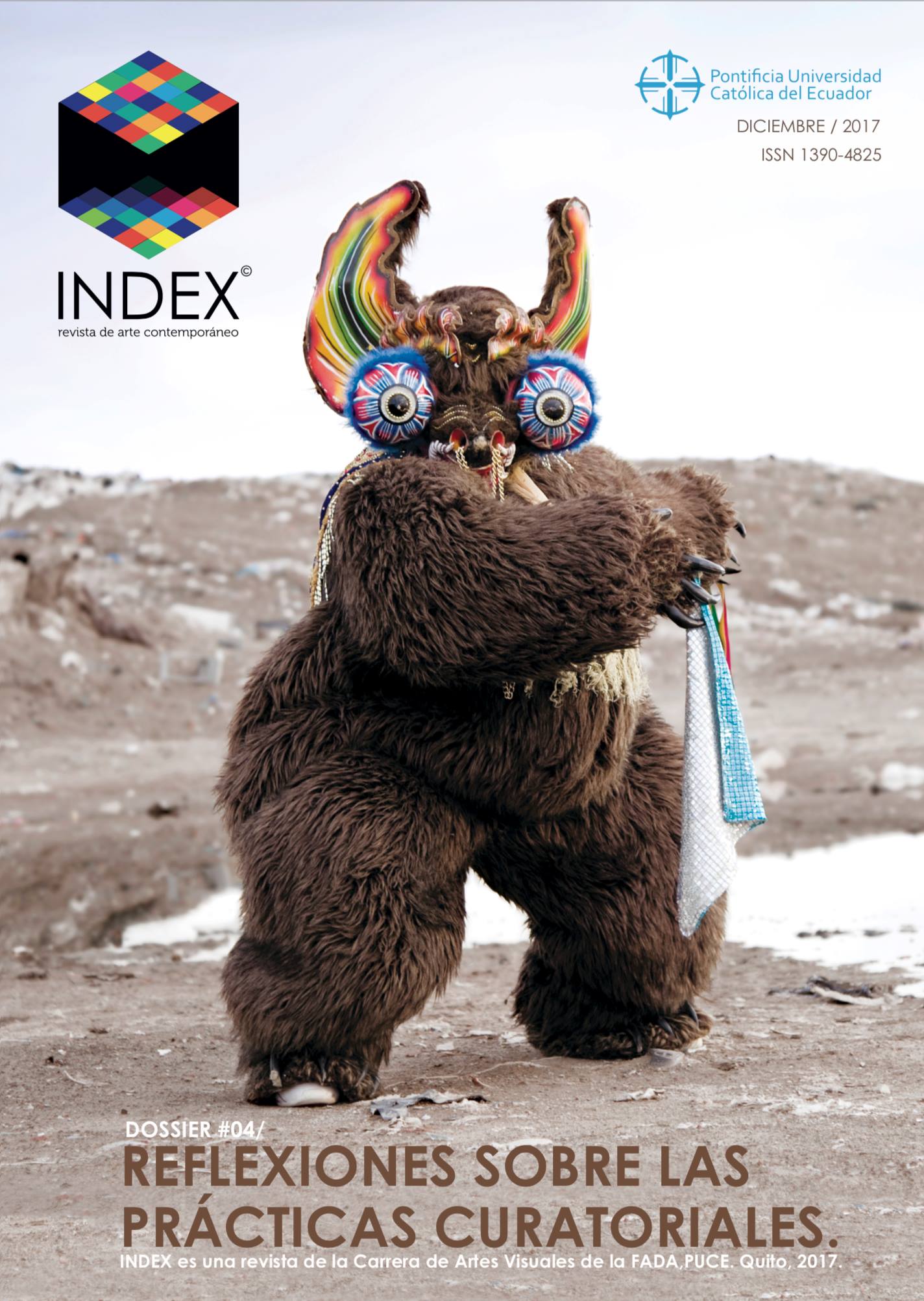Khôra or how to make curatorship a tropical (rain) forest
Main Article Content
Abstract
This essay presents a case study about Khôra gallery, based in Quito, to explore aspects of the curatorial work and methods of creative research. In the first paragraphs, the author formulates definitions around the notion of the curatorial, followed by an analysis of the conditions that determine the creation of Khôra and the theoretical frameworks that accompany its name. A second moment of this text, deliberates about the parameters of thought that covered the first four exhibitions hosted in the gallery, guided by the intention of causing relationships and overflows. Finally, the text closes with a reflection on the possibility of creating experimental models of research that arise when art exhibitions are understood as a means of exploration that go with the development of creative production within an academic space.
Key words: Curatorship, exhibition, research, academy, artists, experimentation.
Downloads
Article Details
Index, revista de arte contemporáneo maneja sus derechos bajo licencia Creative Commons Reconocimiento-NoComercial 4.0. En ese sentido los envíos quedan sujetos a la decisión del autor.
References
Filipovic, E. (2013). "What is an Exhibition", ed. Hoffmann, J., The Fundamental Questions of Curating (Versión de Kindle). A partir de www.amazon.com.
Jijón R. y Martone F. (2017) statement de A room with a view
Kristeva, J. (1984). Revolution in Poetic Language. New York: Columbia University Press Â
Kueva, F. (2017) Statement de ¿Cómo se define un trópico?
Martínez, C. (2014). "The octopus in love", e-flux Journal #55 - May 2014. Recuperado el 7 de septiembre de 2017, a partir de http://www.e-flux.com/journal/55/60304/the-octopus-in-love/
Medina C., (2011). "Raising Frankenstein", ed. Scott, K. Raising Frankenstein: Curatorial Education and its Discontents. Köln: Walther König
Mergler, A. y Villavicencio, C. (2017) statement de Garden Exercises (Haptic/Visual Identities)
Pinsky, M. (2003). Future Present: Ethics And/As Science Fiction. Vancouver: Fairleigh Dickinson University Press
Rometti Costales. (2011 "“ 2017) statement de Las Ediciones del Exotismo Ordinario Internacional Neotropical
Sheikh, S. (2015). "Towards the exhibition as research", eds. O"™Neil, P. & Wilson, M. Curating Research. Amsterdam: Open Editions / de Appel.
Smith, T. (2012). Thinking Contemporary Curating. New York: Independent Curators International

